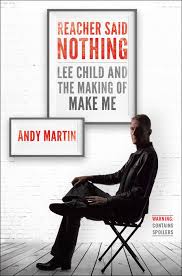by James Scott Bell
@jamesscottbell
Going to be a long post today, so pack a lunch. And be prepared to add to the discussion. The issues are important and come to me by way of an email (quoted with permission):
I know what 3rd Person Limited is, how it works, etc. based on the books and writing groups, etc. One issue that keeps coming up in my critique group about my characters is I don’t describe them early on (i.e. first couple of chapters) as the three POV characters haven’t met or interacted as of yet. I know the reflection scenario is cliche, etc.
The question- do you know some different techniques that could be used to provide character description in the 3rd Person POV? For example, would something like this be okay?
Maxwell rubbed at the double cleft of his chin or His thick fingers combed through his mop of black hair picking up the oily grease used to mat it down.
The issues raised are these:
1. How much description of a main character do you need?
2. What’s the best way to show descriptive elements on the page and remain true to POV?
3. What role does genre play in all this?
- How much description?
In days of yore, authors often began in an omniscient voice for a description of the protagonist before dropping down into Third Person POV. For example, here’s the first paragraph of Gone With the Wind:
Scarlett O’Hara was not beautiful, but men seldom realized it when caught by her charm as the Tarleton twins were. In her face were too sharply blended the delicate features of her mother, a Coast aristocrat of French descent, and the heavy ones of her florid Irish father. But it was an arresting face, pointed of chin, square of jaw. Her eyes were pale green without a touch of hazel, starred with bristly black lashes and slightly tilted at the ends. Above them, her thick black brows slanted upward, cutting a startling oblique line in her magnolia-white skin — that skin so prized by Southern women and so carefully guarded with bonnets, veils and mittens against hot Georgia suns.
And the opening of The Maltese Falcon:
Samuel Spade’s jaw was long and bony, his chin a jutting v under the more flexible v of his mouth. His nostrils curved back to make another, smaller, v. His yellow-grey eyes were horizontal. The v motif was picked up again by thickish brows rising outward from twin creases above a hooked nose, and his pale brown hair grew down–from high flat temples–in a point on his forehead. He looked rather pleasantly like a blond satan.
And this from page 2 of For Whom the Bell Tolls:
The young man, who was tall and thin, with sun-streaked fair hair, and a wind- and sun-burned face, who wore the sun-faded flannel shirt, a pair of peasant’s trousers and rope-soled shoes, leaned over, put his arm through one of the leather pack straps and swung the heavy pack up onto his shoulders.
There’s nothing technically wrong with any of these. It’s a style choice. And I don’t think readers care that much, as long as the description is short and sweet, and we get to some action soon.
But styles change, and today the preferred method is to keep the POV consistent from the jump.
The real question is this: how much detail do we need? And I’m going to say: not much.
Why not? Because all readers form an immediate picture of a character the moment they appear on the page. Without any description at all, we create a visual image, usually based on the actions and dialogue going on.
And you know what else? That picture will usually defy writerly details. Does anyone really picture Sam Spade as a “blond satan”? (I know, it’s probably because of Bogart…but even so, I can’t imagine Spade ever as being blond.) My picture of Spade emerges from the way he talks and how he treats the other characters.
In Dean Koontz’s Sole Survivor, Joe Carpenter wakes up in the middle of the night, clutching his pillow, calling out his dead wife’s name in the dark. Koontz describes the spare apartment he’s in. No bed, just a mattress. No other furniture. He goes to the refrigerator and gets a beer. He sits on the mattress and drinks.
We never get a physical description of Joe. We don’t need one. Just reading the first few pages I have a picture of Joe in my mind. It’s not the same picture you have, or any other reader, and that doesn’t matter. I see him, but more importantly, I sympathize with him. I don’t need to know the color of his eyes, or his hair, or his height.
There is, however, one detail that is usually important for the reader to know, and that’s age. Readers will assign an age to a character. They will “see” a picture in their minds. You can help them along by giving them dialogue and actions commensurate with the character’s age in the story. For example, a cop arriving at a crime scene and jumping out of his cruiser is not going to be pictured as Walter Brennan.
But sometimes the age must be specific. If so, find a place where the character might logically think about his age. For example, he’s about to walk into his workplace. At thirty-three, he was in his fifth year with the company. So why was he feeling like a complete newbie?
What we would call normal physical features are not usually crucial for the reader. What is important are any unique features that help to characterize: A scar on the cheek. A broken nose. Long, unkempt hair. Being tall. Being short. These are the details you’ll want to emphasize.
- What’s the best way to show descriptive elements on the page and remain true to POV?
The general rule is, never describe something in words the character himself wouldn’t use. In the example from the email, above, would the character think, “I’m rubbing my thick fingers through my black hair”? No. He knows his fingers and he knows his hair color. I recently read an opening page that had something like this:
Haskins looked around the room with his piercing, blue eyes.
“Over here, chief,” one of the cops said.
Lifting his lanky frame out of the chair, Haskins walked over to the cop.
Would Haskins think this way? No, this description is coming from the “outside,” that is, from the author, which makes it omniscient POV. Is this some egregious violation? I wouldn’t say so (though some editors might label it “author intrusion”). I just don’t think it’s that effective.
So what’s the alternative? Try a dialogue exchange. Have another character do the describing for you. In my first Mike Romeo thriller, Romeo’s Rules, I wanted readers to know this is a guy who is strong and in shape. On page one Mike is jogging when he stops to admire the flowers being tended by a woman who is around sixty. After some initial chat:
She put out her hand. “Nell,” she said.
“Mike,” I said.
“Happy to meet you, Mike. Except …”
“Yes?”
“You don’t look like a flower man.”
“What do I look like?”
“Football player, maybe?”
I shook my head.
“Then what exactly do you do with all those muscles?”
“Are you flirting with me, Nell?”
This is First Person POV, of course, but is equally applicable to Third Person.
The other physical detail crucial to Romeo is the tattoo on his left arm. It’s Latin script: Vincit Omnia Veritas. Other characters naturally ask about it. One character wants to know if his name is “Vincent.” Another character can actually read Latin. And so on. The tat is remarked on in each book, giving me a chance to naturally reiterate what Mike Romeo’s drive in life is all about—Truth Conquers All Things.
Be sure to give these distinguishing details early in Act 1. If you wait until page 240 to reveal that your hero has one green eye and one blue eye, the change will be jarring. The reader will actually feel cheated. Why didn’t you tell me that earlier?
Yet it doesn’t have to be on page one either. If it’s early enough, readers will happily adjust their picture as needed. In the first Jack Reacher, Killing Floor (which is told in First Person), Reacher is sitting in a diner when cops come in to arrest him. He’s taken to a station for questioning. It’s not until page 16 that we get any description of Reacher. A cop explains that a murder took place, and a man was seen, “a white man, very tall, wearing a long black overcoat, fair hair, no hat, no baggage.” This gives Reacher as narrator a natural way to drop in the following:
Silence again. I am a white man. I am very tall. My hair is fair. I was sitting there wearing a long black overcoat. I didn’t have a hat. Or a bag.
Or, in the alternative, the cop could have said, “Just like you. What’d you do with the hat and the bag?”
So, the fundamentals are:
– Use description only for unique features.
– Use other characters to spell them out or, in the case of First Person, have a legit reason to mention them.
– Drop these details in early enough in the book that it won’t jar the reader later.
- What role does genre play?
My friend, bestselling author Deborah Raney, reminds me that in a romance eye and hair color (even if vague like “pale” or “dark”) are important because those are things the heroine will notice about the hero and vice versa.
In a literary novel where style is often a selling point, a lush description of the main character is more acceptable.
In a historical novel, the way a character dresses is usually important because it shows the reader something about the era the story is set in.
And in an experimental novel there are no rules, so do whatever the heck you want.
Whew. Okay, enjoy your lunch now. And take over from here. What questions or comments do you have about main character description?







